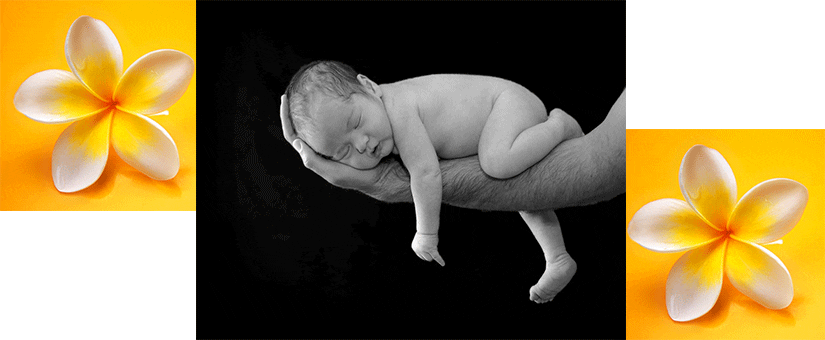زردی نوزاد یک حالت رایج است که باعث زرد شدن پوست و سفیدی چشم ها میشود. تقریبا همه نوزادان تازه به دنیا آمده مبتلا به درجاتی از زردی می شوند اما این زردی همیشه قابل توجه نیست.
برای بیشتر نوزادان، زردی یک شرایط بی خطر است که به طور خود به خودی یا با درمانی معمولی از بین می رود اما در موارد نادر، زردی می تواند خطرناک باشد و نیازمند درمان جدی است.
رنگدانه خونی به نام بیلی روبین با شکسته شدن سلول های قرمز خونی تولید می شود و کبد مسئول بیرون راندن این رنگدانه از خون است. در روزهای اول بعد از تولد به دلیل اینکه کبد هنوز کارایی خود را به خوبی پیدا نکرده نمی تواند بیلی روبین را از جریان خون حذف کند و سطح بالای این رنگدانه در خون باعث زردی می شود.
فاکتورهای خطر ایجاد زردی
نوزادانی با شرایط زیر بیشتر در معرض ابتلا به زردی هستند:
چه زمانی باید به پزشک مراجعه شود؟
در بیشتر موارد، زردی نوزاد خفیف است و به طور خود به خود بعد از 10 تا 14 روز از بین می رود و به درمان خاصی نیاز ندارد؛ فقط باید نوزاد به طور مکرر (بین 8 تا 12 بار در روز) از شیر مادر تغذیه کند.
اما در صورت بروز موارد زیر لازم است به پزشک مراجعه کرده و درمان جدی تری دنبال شود:
درمان زردی نوزاد
فوتوتراپی (نور درمانی)
فوتوتراپی یک روش درمانی موثر و معمول است که در آن از نور برای شکستن بیلی روبین استفاده می شود.
در این روش، نوزاد در زیر نور خاصی با طیف سبز- آبی قرار داده می شود. نوزاد فقط با پوشک پوشانده و عینک مخصوصی برای حفاظت از چشم ها نیز استفاده می شود.
ایمنوگلوبین درون وریدی
در مواردی که زردی به علت تفاوت گروه خونی مادر و نوزاد است از روش ایمنوگلوبین داخل وریدی استفاده می شود. ایمنوگلوبین داخل وریدی پروتئینی است که باعث کاهش سطح آنتی بادی تولید شده علیه سلول های قرمز خون می شود.
تعویض خون نوزاد
در موارد بسیار شدید که زردی به درمان های معمول پاسخ نمی دهد لازم است خون نوزاد تعویض شود. در این روش به دفعات متعدد مقداری از خون نوزاد گرفته می شود و با خون فرد دهنده مناسب تعویض می شود.
منابع
www.healthline.com/health/newborn-jaundice#CausesandRiskFactors2
www.emedicinehealth.com/newborn_jaundice/article_em.htm
www.babycenter.com/0_jaundice_89.bc
www.mayoclinic.org/diseases-conditions/infant-jaundice/basics/symptoms/con-20019637
www.mayoclinic.org/diseases-conditions/infant-jaundice/basics/treatment/con-20019637
Jaundice is a yellow discoloration of the skin and the white part of the eyes. It results from having too much of a substance called bilirubin in the blood.
Bilirubin is formed when the body breaks down old red blood cells. The liver usually processes and removes the bilirubin from the blood.
Jaundice in babies usually occurs because of a normal increase in red blood cell breakdown and the fact that their immature livers are not efficient at removing bilirubin from the bloodstream.
In fact, virtually all newborn babies have some jaundice, but it’s not always noticeable.
For most babies, this is a temporary, harmless condition that goes away on its own or with mild treatment. But in rare cases, it’s very serious, so it’s important to keep an eye on it.
Risk Factors
Babies at highest risk for developing newborn jaundice are:
Premature babies, born before 38 weeks’ gestation.
Babies who are not getting enough breast milk, either because they are having a hard time feeding or because their mothers’ milk is not in yet.
Babies whose blood type is not compatible with their mothers’—this may cause a build-up of antibodies that destroy babies’ red blood cells and cause a sudden rise in bilirubin levels.
Other causes of new born jaundice include bruising at birth or other internal bleeding, infection, liver malfunction, enzyme deficiency, or an abnormality in a baby’s red blood cells.
When to see a doctor
The following signs or symptoms may indicate severe jaundice or complications from excess bilirubin. Call your doctor if:
Your baby’s skin becomes more yellow
Your baby’s skin looks yellow on the abdomen, arms or legs
The whites of your baby’s eyes look yellow
Your baby seems listless or sick or is difficult to awaken
Your baby isn’t gaining weight or is feeding poorly
Your baby makes high-pitched cries
Your baby develops any other signs or symptoms that concern you
Jaundice lasts more than three weeks
Treatments
Light therapy (phototherapy)
Your baby may be placed under special lighting that emits light in the blue-green spectrum. The light changes the shape and structure of bilirubin molecules in such a way that they can be excreted in the urine and stool.
During treatment, your baby will wear only a diaper and protective eye patches. The light therapy may be supplemented with the use of a light-emitting pad or mattress.
Intravenous immunoglobulin (IVIg)
Jaundice may be related to blood type differences between mother and baby. This condition results in the baby carrying antibodies from the mother that contribute to the breakdown of blood cells in the baby. Intravenous transfusion of an immunoglobulin — a blood protein that can reduce levels of antibodies — may decrease jaundice and lessen the need for an exchange blood transfusion.
Exchange transfusion
Rarely, when severe jaundice doesn’t respond to other treatments, a baby may need an exchange transfusion of blood. In this procedure, small amounts of your baby’s blood are removed and replaced with blood from a matching donor.
References
www.healthline.com/health/newborn-jaundice#CausesandRiskFactors2
www.emedicinehealth.com/newborn_jaundice/article_em.htm
www.babycenter.com/0_jaundice_89.bc
www.mayoclinic.org/diseases-conditions/infant-jaundice/basics/symptoms/con-20019637
www.mayoclinic.org/diseases-conditions/infant-jaundice/basics/treatment/con-20019637

